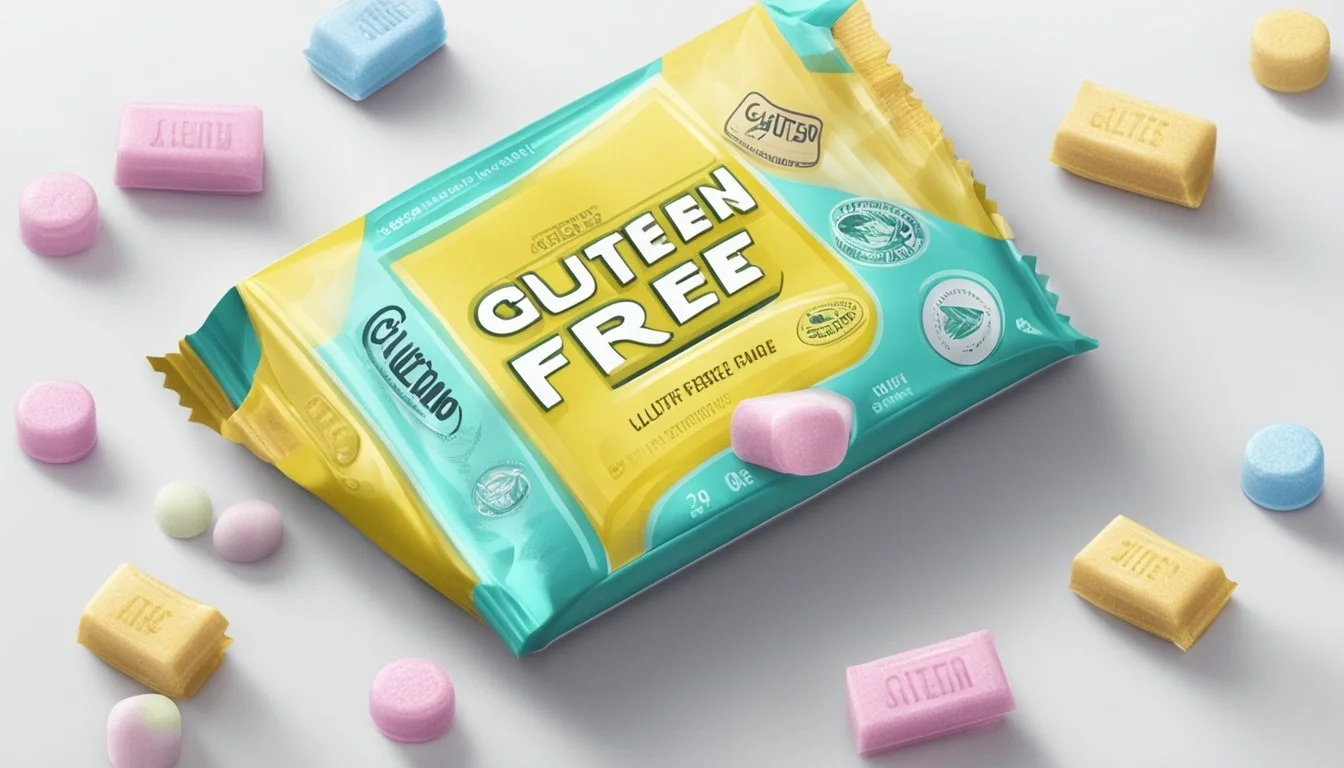Is Chewing Gum Gluten-Free?
Unwrapping the Truth about Gum Ingredients
Individuals with celiac disease or gluten sensitivities often scrutinize ingredient lists to avoid the adverse health effects that gluten, a protein found in wheat, barley, and rye, can provoke. Chewing gum, a common staple in many people's daily routines, generally does not top the list of concerns for containing gluten. However, not all gums are created equal. While many brands and varieties of chewing gum are gluten-free, there are instances where chewing gum can contain gluten either through added flavors, sweeteners, or as a part of the gum base itself.
To ensure safety and health, it is imperative for consumers to not only rely on gluten-free labels but also to contact manufacturers directly for the most accurate and up-to-date information regarding their production processes and ingredients. Some gum manufacturers have taken the proactive step of certifying their gum as gluten-free, thereby offering peace of mind to those who need to ensure their chewing gum is safe for their dietary requirements.
Understanding Gluten
Gluten is a protein complex that poses dietary concerns for individuals with certain health conditions. This section will explore gluten's definition, its sources, and the health issues associated with its consumption.
Defining Gluten and Its Common Sources
Gluten is a family of proteins found primarily in wheat, barley, rye, and oats. It consists of two main proteins, gliadin and glutenin, which are responsible for the elasticity and rise of dough. The following list highlights the primary grains containing gluten:
Wheat: Includes varieties like spelt, kamut, farro, and durum, as well as products such as wheat flour, bread, and pasta.
Barley: Common in malt, food coloring, soups, and beverages.
Rye: Typically found in rye bread, rye beer, and some cereals.
Oats: Often contaminated with gluten unless labeled gluten-free.
Gluten-Related Health Concerns
Individuals with celiac disease, an autoimmune condition, can suffer damage to their small intestine when consuming gluten. Symptoms vary widely and can include digestive distress, anemia, and fatigue. Gluten intolerance and non-celiac gluten sensitivity are also notable health concerns, where individuals experience symptoms similar to celiac disease without the associated autoimmune damage. Common symptoms can include bloating, headaches, or joint pain. A distinct understanding of these sensitivities is crucial as they impact dietary choices and overall health.
Chewing Gum Ingredients
Chewing gum is composed of several key ingredients that define its texture, taste, and durability. These components are crucial to the production of gum and vary based on the brand and type of gum.
Common Components of Gum Base
The gum base is the foundation of chewing gum and provides its chewable texture. Historically, natural substances like chicle, a sap sourced from sapodilla trees, served as the primary gum base. Today, the gum base might also be made from synthetic materials like butadiene-based rubber, which allow for longer-lasting chewiness. Waxes and elastomers are typically added to the gum base to adjust the firmness and elasticity.
Natural Gum Bases: Chicle, rubber latex
Synthetic Gum Bases: Butadiene-based rubber, polyethylene, polyvinyl acetate
Most modern gums no longer contain wheat or gluten elements in their base, addressing the needs of gluten-sensitive consumers.
Additives in Chewing Gum
Additives encompass a range of substances that enhance the chewing experience through flavor, sweetness, and texture.
Sweeteners: These are crucial for taste and can be natural like cane sugar or artificial like aspartame and sucralose. Some brands may utilize sugar alcohols such as xylitol for their sweetening needs.
Softeners: Ingredients like vegetable oil are often included to maintain the gum's moisture and prevent hardening.
Flavorings: Both natural and artificial flavors contribute to the gum's appeal and are responsible for the variety of flavors available on the market.
Coloring Agents: These are used to give the gum its visual appeal, matching the expected color with the flavor profile.
Each additive has a specific role in the production of chewing gum and can affect its gluten-free status. Consumers must read labels carefully, especially if they require gluten-free products, as some flavorings and colorings may contain gluten derivatives.
Identifying Gluten-Free Gum
When selecting chewing gum, one must pay careful attention to labels and certifications to ensure the absence of gluten. Some brands have made a commitment to manufacturing gluten-free gum options for those with celiac disease or gluten sensitivities.
Labels and Certifications
Gluten-free labels are an essential guide to identifying safe options for consumers avoiding gluten. These labels indicate that a product has met strict standards for gluten content, typically less than 20 parts per million as recognized by health authorities. Certifications by reputable organizations further strengthen the credibility of gluten-free claims. Consumers should look for clearly marked labels or stamps from organizations such as the Gluten-Free Certification Organization (GFCO) when choosing gum. Furthermore, it's crucial to examine ingredient lists for hidden sources of gluten and be vigilant about cross-contamination warnings.
Trusted Gluten-Free Gum Brands
Certain gum brands have established a strong reputation for providing gluten-free products. Here is a list of some trusted brands and their notable gluten-free gum options:
Wrigley: Offers a selection of gluten-free gums, including popular lines like Extra and Orbit.
Glee Gum: Known for being gluten-free, Glee Gum also excludes artificial colors, flavors, and preservatives.
Simply Gum: Commits to natural ingredients, providing a gluten-free chewing experience.
One should always verify information on the package or the manufacturer's website, as the gluten-free status of a product can change over time. It is also advisable to contact manufacturers directly if there is any doubt regarding the gluten-free status of a particular gum.
Manufacturers and Brands
The role of manufacturers is crucial in determining whether chewing gum is gluten-free, and many popular brands such as Wrigley and Trident have options suitable for those avoiding gluten.
Role of Gum Manufacturers in Gluten Content
Gum manufacturers are key in ensuring their products meet the needs of consumers with gluten sensitivities. They must avoid cross-contamination and ensure that they do not use ingredients containing gluten, which could appear in trace amounts in some gums. Wrigley, for instance, produces several gluten-free gums, including Extra, Orbit, and more. Trident, another major brand, presents a variety of flavors that are also gluten-free.
Exploring Popular Gum Brands
Below are some of the prominent gum brands with their respective gluten-free products:
Wrigley:
Orbit
Extra
Spearmint
Juicy Fruit
Big Red
Doublemint
Eclipse
Freedent
Winterfresh
Extra and Orbit offer a range of gluten-free flavors, catering to those with gluten intolerance or celiac disease.
Trident: Known for its refreshing flavors and gluten-free options.
Glee Gum is another manufacturer offering gluten-free chewing gums, though as always, it is advisable to check packaging for the most recent gluten content information.
Manufacturers are continuously adapting to cater to the gluten-free market, and as such, the availability of gluten-free gum is expansive. Consumers seeking gluten-free options should always look for clear labeling and may consider reaching out to manufacturers directly to verify gluten content.
Dietary Considerations
For individuals following a gluten-free diet, determining whether chewing gum is free from gluten is essential. It is also important to consider other dietary restrictions such as allergies and vegan preferences when selecting chewing gum.
Gluten-Free Diet and Chewing Gum
Chewing gum can be a point of concern for people with gluten-related disorders such as celiac disease or non-celiac gluten sensitivity. Gluten is a protein found in wheat, barley, and rye, and it can be present in gum as a binder or filler. However, several brands manufacture gluten-free chewing gums that are safe for these individuals. For instance, Wrigley offers a range of gums that do not contain gluten, including popular flavors like 5-Gum and Extra. Consumers should look for gums labeled as gluten-free or verify the gluten status by checking the manufacturer's official website or customer service.
When scanning labels for gluten:
Check for a gluten-free label; such products are typically safe.
If there's no gluten-free label, review the ingredients for hidden gluten sources, such as wheat or wheat-derived products.
Addressing Other Sensitivities and Allergens
Individuals may have needs beyond a gluten-free diet, such as avoiding other allergens or adhering to a vegan lifestyle. As gums sometimes contain animal-derived ingredients or allergens, it becomes crucial to check labeling thoroughly.
Look for these key terms for vegan and allergen considerations:
Vegan: Ensure gums do not contain animal products like gelatin.
Allergens: Be vigilant about other common allergens such as soy or peanuts, which might be present in some gums.
In conclusion, consumers must read labels and seek out brands that cater to their specific dietary requirements. By doing so, individuals with dietary restrictions can safely include chewing gum in their diets.
Consumer Guidance
When seeking gluten-free chewing gum, consumers should examine labels closely and understand gum ingredients to ensure they are making safe choices for their dietary needs.
How to Choose Gluten-Free Gum
Finding the right gluten-free chewing gum begins with identifying brands that offer gluten-free products. Gluten-free gum is not hard to come by, as many brands have options that do not contain gluten ingredients. Consumers should search for a variety of gluten-free gum choices available from major manufacturers, such as Trident and Wrigley's. Here is how a consumer can choose gluten-free gum:
Research Brands: Start by searching online for gluten-free gum manufacturers.
Visit Official Websites: Manufacturer websites often indicate which of their products are gluten-free.
Seek Recommendations: Look into community recommendations from forums and reviews.
Confirm with Customer Service: Contact the manufacturer directly for the most accurate and current product information.
Reading Labels for Hidden Gluten
The key to avoiding gluten in chewing gum is to read labels meticulously for any gluten-containing ingredients or cross-contamination warnings. One must look beyond the obvious and watch out for terms that might indicate the presence of gluten. Here are specific ingredients to be wary of:
Maltitol: A sugar alcohol that is gluten-free, but sometimes sourced from wheat.
Malt: Typically derived from barley and should be avoided.
Corn Syrup: Usually gluten-free but verify if the brand is safe for celiac individuals.
Soy Lecithin: Generally gluten-free, though it's crucial to check for cross-contamination.
The description should specifically state "gluten-free," or else the safer approach is to assume gluten might be present. Consumers must also be cautious with gums that have flavorings or colorings, as these can be sources of hidden gluten.
Additional Ingredients of Concern
When considering whether chewing gum is gluten-free, one must also be aware of other ingredients that could cause health concerns or affect those with sensitivities.
Artificial Sweeteners and Compounds
Chewing gums often contain artificial sweeteners as a low-calorie alternative to sugar. Common sweeteners include:
Aspartame: A widely used sweetener that can cause problems for individuals with phenylketonuria (PKU).
Sucralose: Another sweetener found in some sugar-free gums.
Acesulfame K: Often used in conjunction with other sweeteners to enhance sweetness.
Mannitol and Xylitol: Sugar alcohols that can have a laxative effect in high amounts.
Glycerol: It can be used as a sweetener and to retain moisture.
These compounds are FDA-approved for use but can still cause digestive discomfort in some individuals.
Preservatives and Fillers
Chewing gum often contains preservatives and fillers that enhance texture and shelf life. These include:
BHT (Butylated Hydroxytoluene): An antioxidant used as a preservative, which is subject to health-related controversies regarding its safety.
Hydrogenated Starch Hydrolysate: A bulking agent that can be found in some gums.
Corn: Derivatives such as corn syrup and cornstarch may be present, which are critical for consumers with corn allergies or sensitivities.
Moreover, gums might include artificial colors which are regulated by the FDA, but which some consumers choose to avoid for personal or health reasons. It's important to read product labels carefully to determine if a gum contains any of these additional ingredients of concern.







